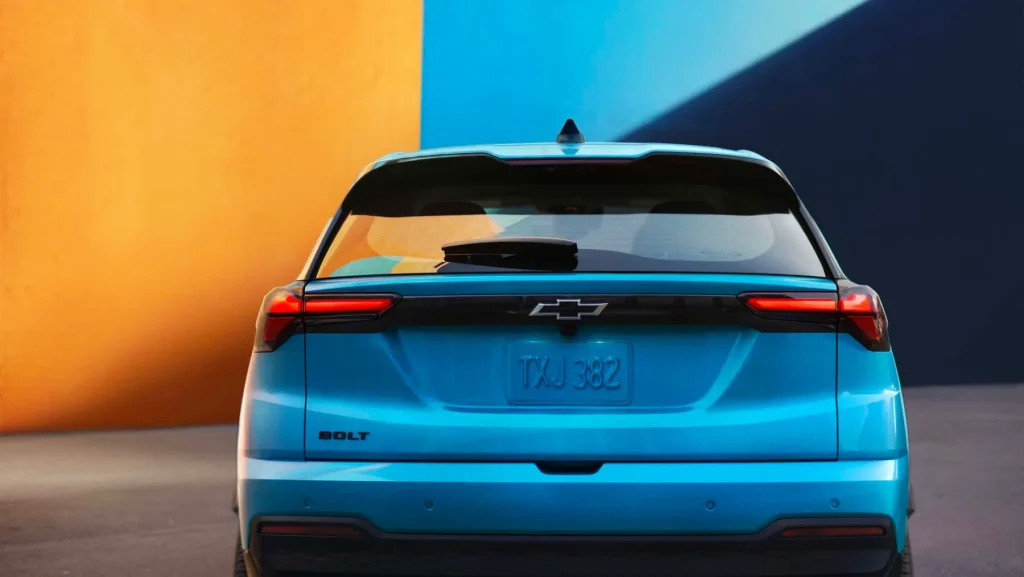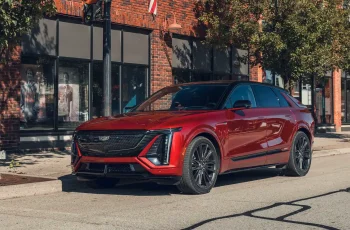General Motors is gearing up to expand its electric vehicle portfolio with a series of low-cost models following the return of the Chevrolet Bolt. With the Bolt officially scheduled to relaunch in the first quarter of 2026, GM is planning to introduce a “family” of vehicles built around the same accessible price point, aiming to bring electric mobility to a wider audience. GM President Mark Reuss confirmed that the upcoming lineup will focus on compact, affordable EVs, priced around $30,000, plus or minus a few thousand dollars.

Building on the Bolt Reboot
The original Chevrolet Bolt helped pave the way for mass-market EV adoption in the United States, offering a compact footprint and reasonable range at a competitive price. With the revived Bolt, which shares more similarities with the Bolt EUV in terms of size, GM is using it as a foundation for a broader lineup of entry-level electric vehicles. According to Reuss, the company intends for future models to follow the same philosophy of affordability and practicality, while potentially expanding to include multiple body styles such as crossovers and sedans.
This approach indicates GM’s strategic focus on “white spaces” in the EV market, targeting customers who may not be able to justify spending $50,000 or more on an electric vehicle. By focusing on lower-cost options, Chevrolet can appeal to a segment of buyers looking for dependable, compact EVs with realistic pricing, thereby increasing overall EV adoption among mainstream consumers.
Pricing and Market Position
The new models are expected to stay close to the $30,000 mark, making them some of the most affordable options on the market. Reuss emphasized that the vehicles will be “in the same vein of size and price” as the Bolt, giving potential buyers consistent expectations for performance, dimensions, and usability. This strategic pricing aligns with GM’s goal of creating high-volume, low-cost EVs that can compete directly with emerging low-price EV competitors and expand Chevrolet’s market share in the electric segment.
Affordability remains a key differentiator, especially as the electric vehicle market increasingly features premium offerings that start well above $40,000. By keeping price points accessible, GM can target first-time EV buyers and customers transitioning from traditional internal-combustion vehicles, making electric mobility more inclusive and attainable.
Potential Body Styles and Configurations
While specific models in the “family of Bolts” have not been detailed, industry speculation suggests the lineup may include compact crossovers and potentially a small sedan. These vehicles are likely to share a platform with the revived Bolt, leveraging GM’s modular EV architecture to streamline production and maintain cost efficiency. By using a common foundation, Chevrolet can offer multiple variations with minimal engineering complexity, enabling faster rollout and broader consumer choice.
The use of a shared platform also suggests that GM could optimize battery and powertrain configurations across the lineup, ensuring competitive range and performance while controlling manufacturing costs. This strategy would allow the automaker to offer EVs that meet varying customer needs without sacrificing affordability or reliability.
Expanding EV Accessibility
GM’s focus on low-cost electric vehicles aligns with broader industry trends aimed at increasing EV accessibility. While many brands have concentrated on premium EVs with long-range batteries and high-tech features, the “family of Bolts” strategy targets practical transportation for everyday consumers. By addressing this segment, GM is not only capturing untapped demand but also supporting government and environmental goals for greater electrification of the vehicle fleet.
Mark Reuss’ comments highlight the importance of affordability in accelerating EV adoption. By providing multiple options under a similar price umbrella, Chevrolet aims to make electric vehicles a viable choice for a diverse range of consumers, from urban commuters to small families seeking economical and eco-friendly alternatives.
Strategic Implications for GM
The expansion of the Bolt lineup represents a calculated effort by GM to dominate the lower-price EV market segment. By combining a proven platform with competitive pricing, the company can challenge emerging players while strengthening brand loyalty among existing Chevrolet owners. Additionally, the strategy allows GM to scale production efficiently, optimizing resources and battery supply chains as demand for EVs continues to grow.
This approach also reflects a long-term vision for Chevrolet, positioning the brand as a leader in accessible electric mobility. The potential for crossovers, sedans, and other compact configurations under a unified pricing strategy indicates a clear plan to meet a variety of consumer needs while maintaining affordability as a core selling point.

Looking Ahead
As the first quarter of 2026 approaches, excitement is building around the Chevy Bolt revival and the subsequent rollout of the “family of Bolts.” With an emphasis on compact size, affordability, and practical electric performance, these upcoming vehicles could reshape GM’s EV portfolio and make significant strides toward mainstream adoption.
Chevrolet’s focus on delivering accessible electric mobility highlights a pivotal moment for the EV market: high-volume, low-cost vehicles may be the key to transforming electric cars from a niche segment into a standard choice for everyday drivers. By continuing to expand its lineup with models built around the Bolt platform, GM is signaling a commitment to democratizing electric transportation and setting the stage for the next era of affordable EVs.



